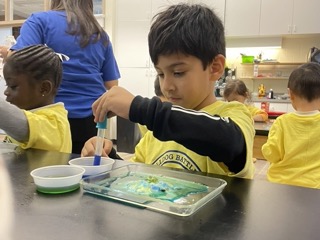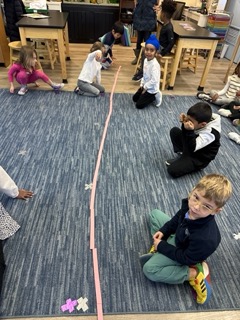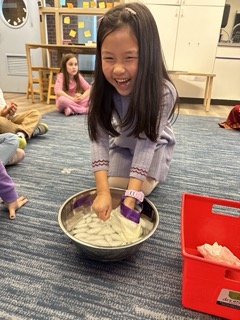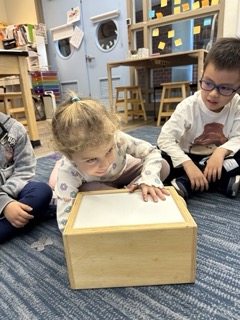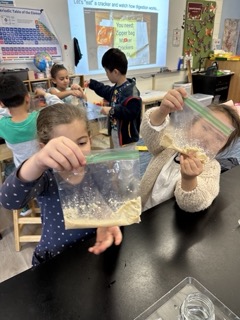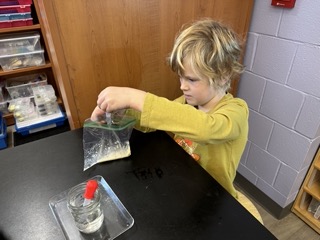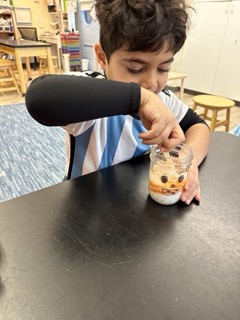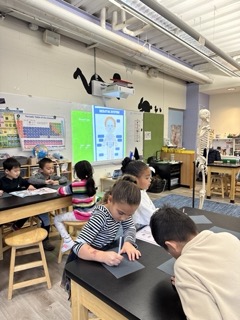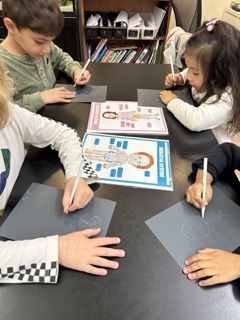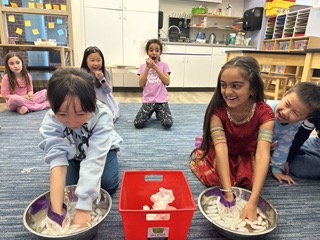
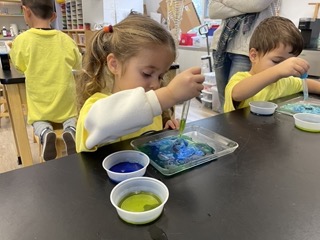
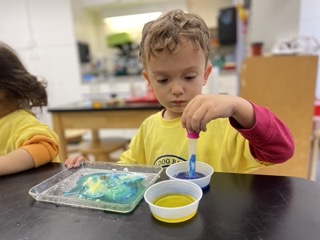
The school year is in full swing and the children in preschool 3 through 1st grade have been busy learning about the world around them. They listen and share their thoughts and questions with one another. They are joyous in their discoveries and are eager to deepen their scientific knowledge. Here are a few topics that we have been studying in science this fall.
Preschool children are constantly using their senses to take in their environment. They often share with us what they are seeing, hearing, or feeling. During science, we are focusing on our five senses, one sense at a time. Recently, we learned about our sense of touch and used a mystery box to discover what items we could feel without using any of our other senses. The children had so much fun discovering what was inside the box – often making inferences about what they felt. For example, when feeling a book a child remarked, “I think this object has a lot of words inside of it!” As well, the preschool 4 children mixed together ingredients to make slime and were full of joy as they manipulated the slime and watched it ooze through their fingers. During spirit week, the preschool 3 children used their sense of sight to watch colors “magically” turn green as they mixed together our school colors – blue and gold.
Building upon their knowledge of their five senses, children in kindergarten have been learning about the body systems that regulate how our bodies function. Starting with the cardiovascular system, the children actively experienced how each body system works and reflected upon how we can keep our bodies healthy. The students practiced locating their pulse and compared how fast their hearts were beating at rest versus following physical activity. Next, they learned about their skeletal system and drew their own dancing skeletons. The kindergarteners discovered how their digestive system works and experimented with how foods are broken down in their stomach. We laid out foot long strips of construction paper to measure the length of our small intestines – almost 22 feet long! Continuing on, we will learn about the function of our lungs in the respiratory system and touch upon the importance of our brain when we study the nervous system.
Throughout the fall semester the first-grade students studied adaptations, building upon their previous exploration of animals and their diverse habitats. The students enthusiastically connected their current studies with prior knowledge, deepening their understanding of the ways in which physical and behavioral adaptations contribute to the survival of various species. As they observed the metamorphosis of Monarch butterflies earlier in the semester, the students saw first-hand an adaptation that promoted the survival of the butterflies. They learned that the bright orange and black colors on the wings of the Monarch serve as a warning to potential predators that, due to the toxic milkweed that they fed on as caterpillars, they are inedible. The first-graders experimented with how blubber in certain cold weather animals, like whales, seals and walruses, can aid in survival by keeping them insulated and warm. The children plunged both hands, one covered in a bag filled with “blubber” (vegetable shortening) and the other one bare, into a bowl filled with ice water. The children were surprised to experience how their blubber-covered hand stayed much warmer than their bare hand.
Please enjoy the photos of the children joyfully making discoveries this fall.

